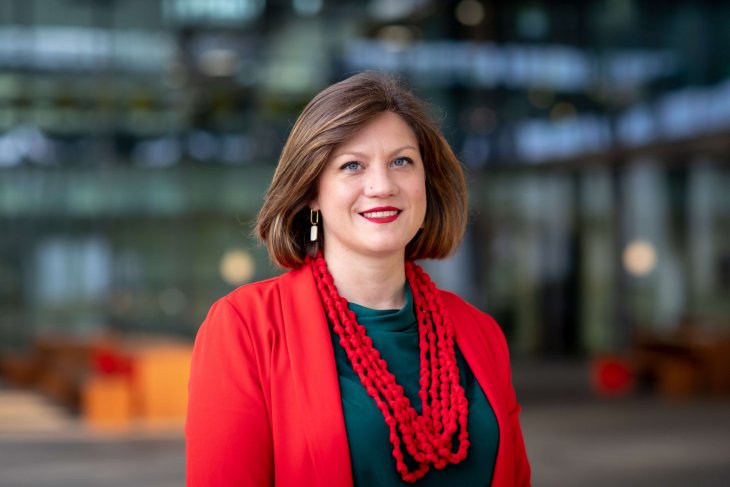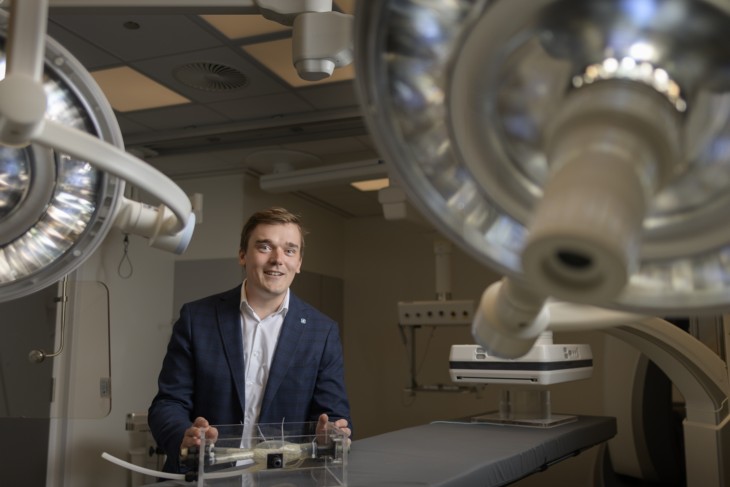The number of people living with dementia is on the rise, while the number of individuals available to provide care for them and their families is in decline. This development is taking place against a backdrop of government policy encouraging people to remain in their own homes for as long as possible, even as their vulnerability increases.
“As a result, the responsibility for caring for people with dementia increasingly falls to their loved ones,” Toso observes. “They are not always equipped to cope with the challenges that arise. This calls for better access to information and support in decision-making processes, but also for research into the role technology might play in supporting both the individual with dementia and their loved ones throughout this process.”
To be clear, Toso is quick to point out that the technology itself is not the focal point. “The emphasis lies in the potential of technology to facilitate human interaction. To offer support, in other words, in accepting the diagnosis and the associated loss of identity, and in helping to navigate the impact that dementia has on the social functioning of both the individual and those around them. It is crucial to build upon technological applications people are already familiar with. Smartphones and ChatGPT, for example, are relatively easy to use for many, even for those without knowledge of large language models.”
Exploratory workshop
As one of the initial steps in the research process, a Dementia Lab Conference was held to explore the ethical and aesthetic considerations involved in the use of technology in dementia care. “The participants in this event were professionals working in the field of technology,” Toso explains. “But what made their contribution particularly valuable was that they had direct experience involving people with dementia in their work.”
Some, Toso adds, even had personal experience with dementia in their own lives. That context is vital to gaining a proper understanding of the relational aspects of the condition. “But of course, it also meant their contributions were deeply personal. We made sure to give everyone the freedom to leave the workshop at any point if they felt the need.”
Based on the Responsible Futuring approach (from the DesignLab), the workshop explored possible future technologies that could be of value, Toso outlines. “This was in collaboration with Dr Ir Cristina Zaga and Dr Lonneke Lenferink (of the JEDAI collective – Justice, Equity & Diversity in AI, ed.). One of the tools from the Responsible Futuring toolbox that we used is the Zine. It’s a small magazine based on visual elements that allows participants to explore possible applications to help manage dementia. Using the Zine, participants created a collage of images representing potentially applicable technologies.”
Open discussion
The outcomes of such exploratory sessions can vary, depending on the individual experiences of the design experts involved. “The imagined technologies featured in the Zines don’t have to be realistic,” says Toso. “They serve to encourage free thinking and open up discussion about what might or might not be applicable in the given context. It was primarily intended as a starting point for further research.”
She continues: “In this setting, we were able to examine how technological interventions could help foster a sense of connectedness by providing a safe space to discuss sensitive subjects. We also looked into how they might support both the individual with dementia and their carer in preparing for death: by helping them remain present in the moment, continue creating shared memories, and make space for grief and mourning after the person has passed away.”
Second workshop
The next step will be to repeat the workshop with people living with dementia and their loved ones. “It’s vitally important to carefully consider the ethical aspects of what we are studying,” says Toso. “That starts with the language we use: people living with dementia, not ‘demented patients’. We focus on the people, not the illness. The first workshop taught us a lot in that regard. We can also draw on the Alzheimer Europe guidelines for inclusive and respectful language.”
Whether individuals with dementia can be directly involved in the research depends on their cognitive abilities. “But more importantly,” Toso stresses, “it depends on the tools we provide. We want to ensure participants feel at ease. And we want to give something back in return for their involvement, to acknowledge their contribution.”
Next steps
Toso is currently developing several proposals to advance the research and is also seeking funding to support this effort. “The fact that our research can take place not only in people’s homes but also in care homes might make participation interesting for the latter. It could also appeal to organisations offering bereavement support. And naturally, companies are developing technologies to help people live independently at home for longer. Technologies that stimulate cognitive activity, for instance, or help build shared memories.”
When it comes to the practical application of such technologies, a key question will be how to handle the data they generate. “This isn’t about medical technology,” says Toso, “which offers a bit more freedom. But implementation will inevitably take time. Not everyone is immediately willing or able to use new technologies. So design is an essential consideration too.”
These are precisely the elements that make this research so fascinating, she adds. “And the University of Twente is the perfect place for it. After all, our mission is High Tech, Human Touch, and that’s exactly what we do here: we combine technology and social science. All the necessary expertise is right here.”



